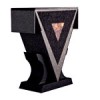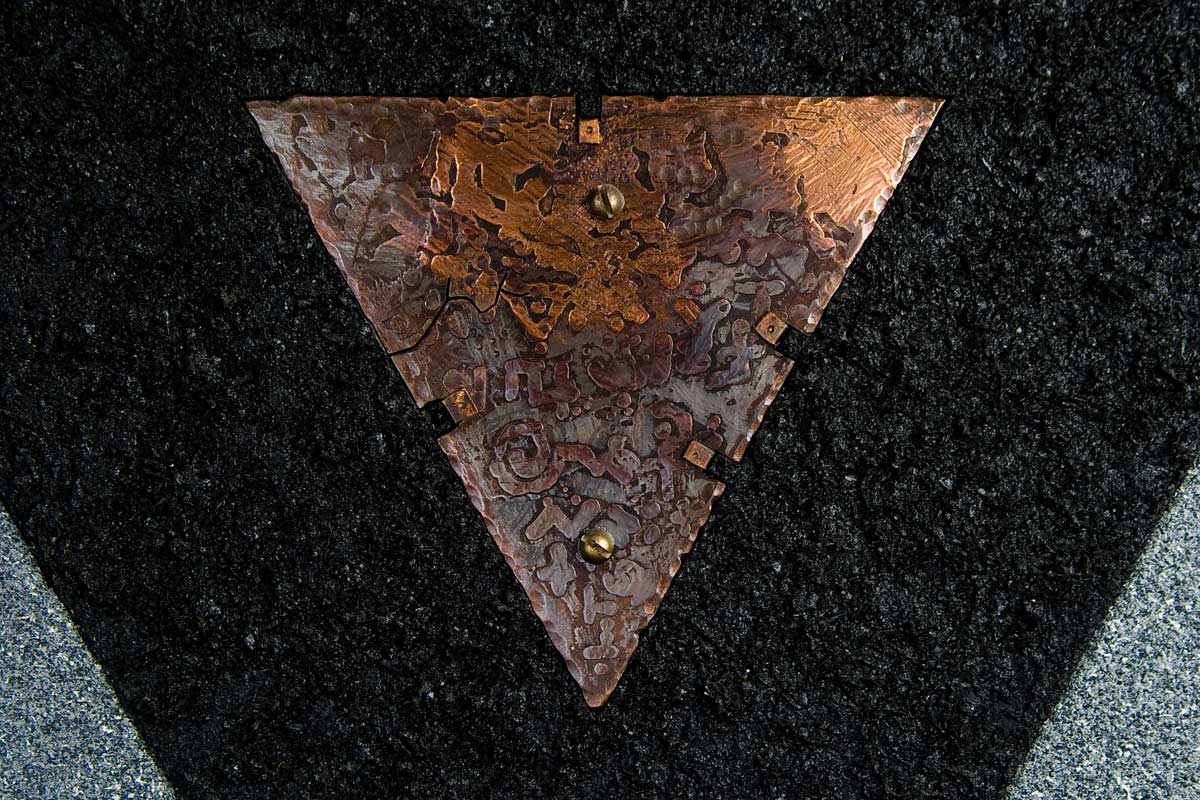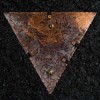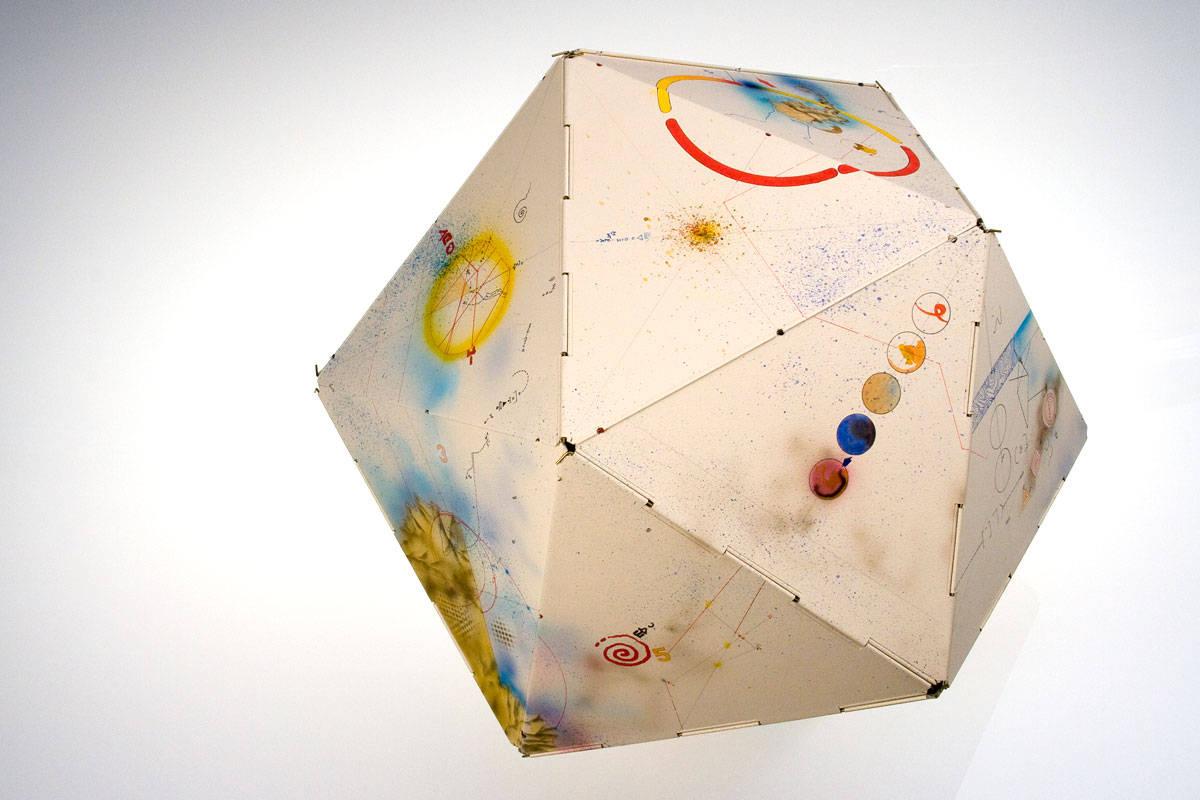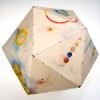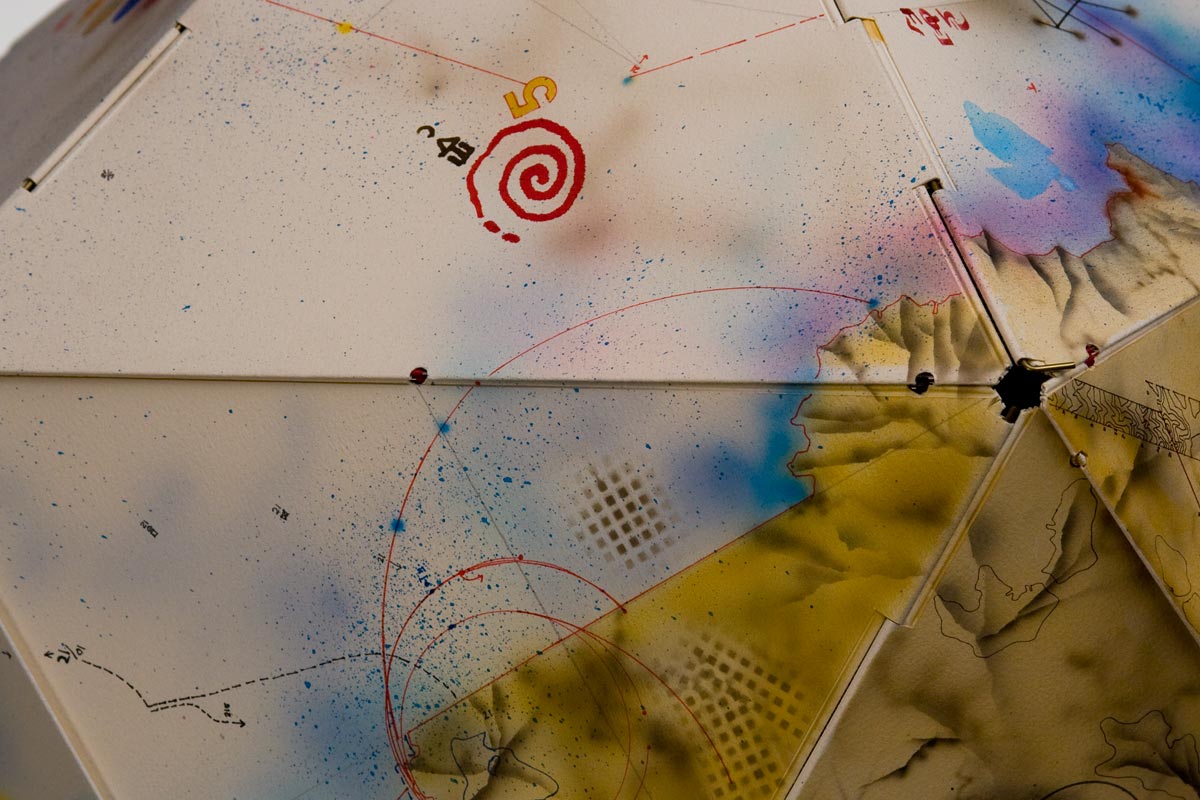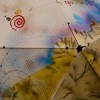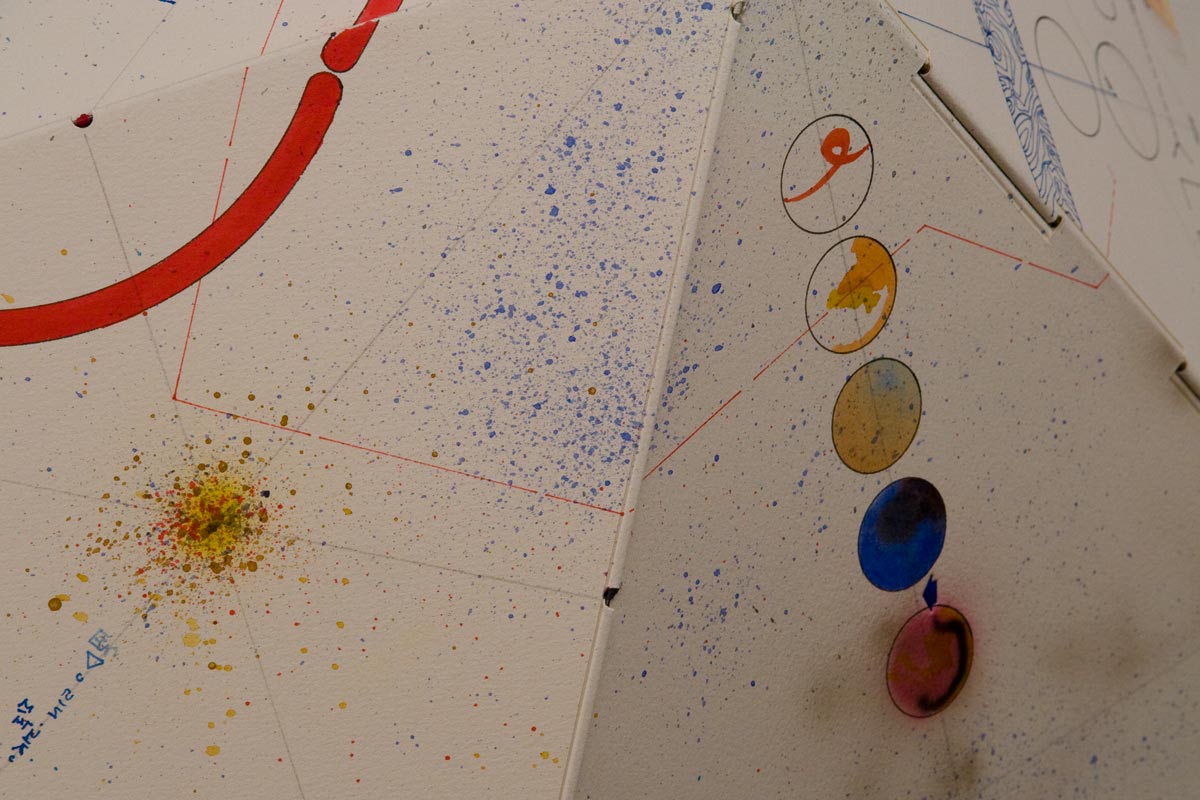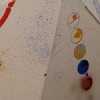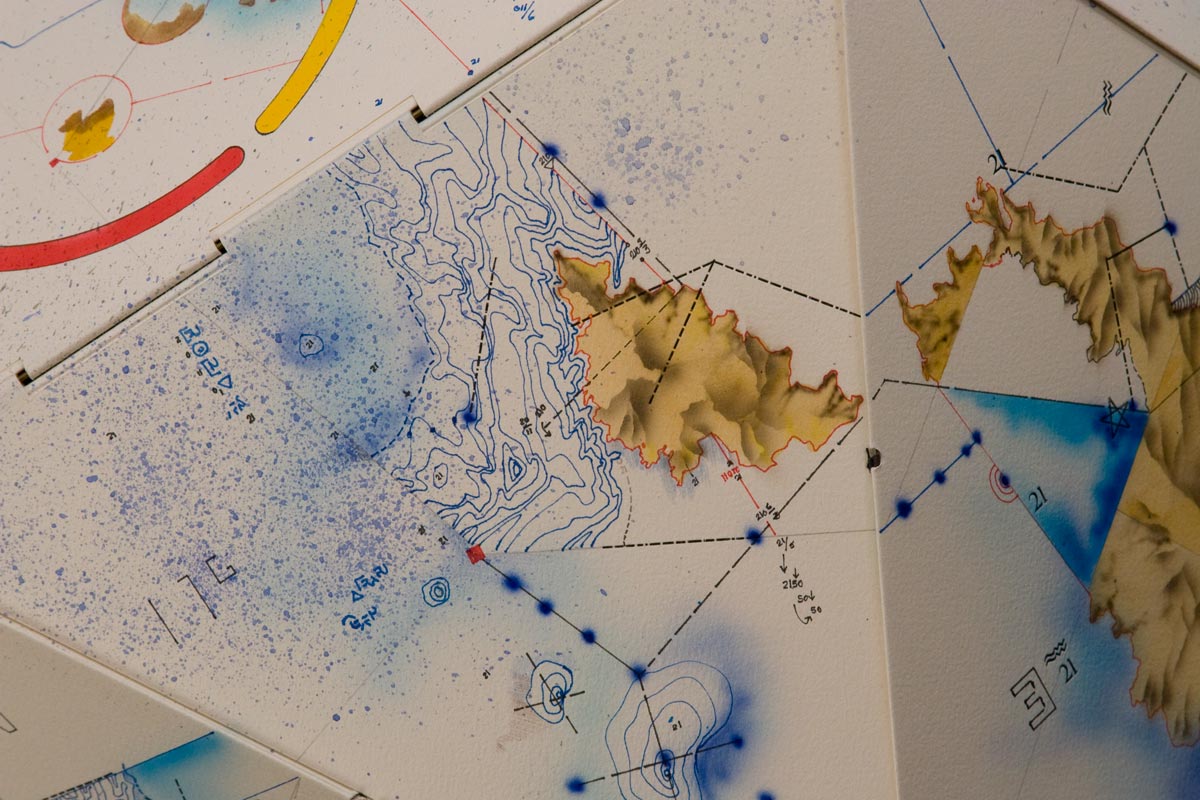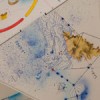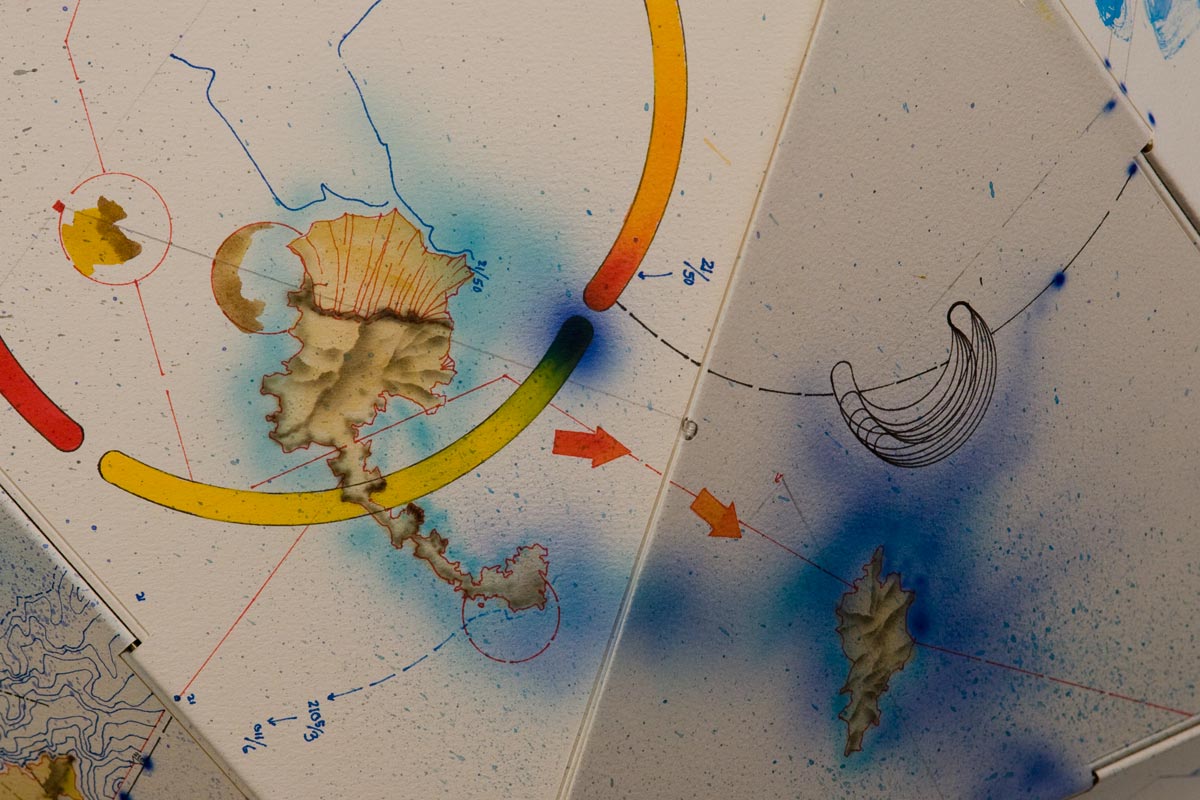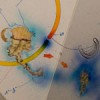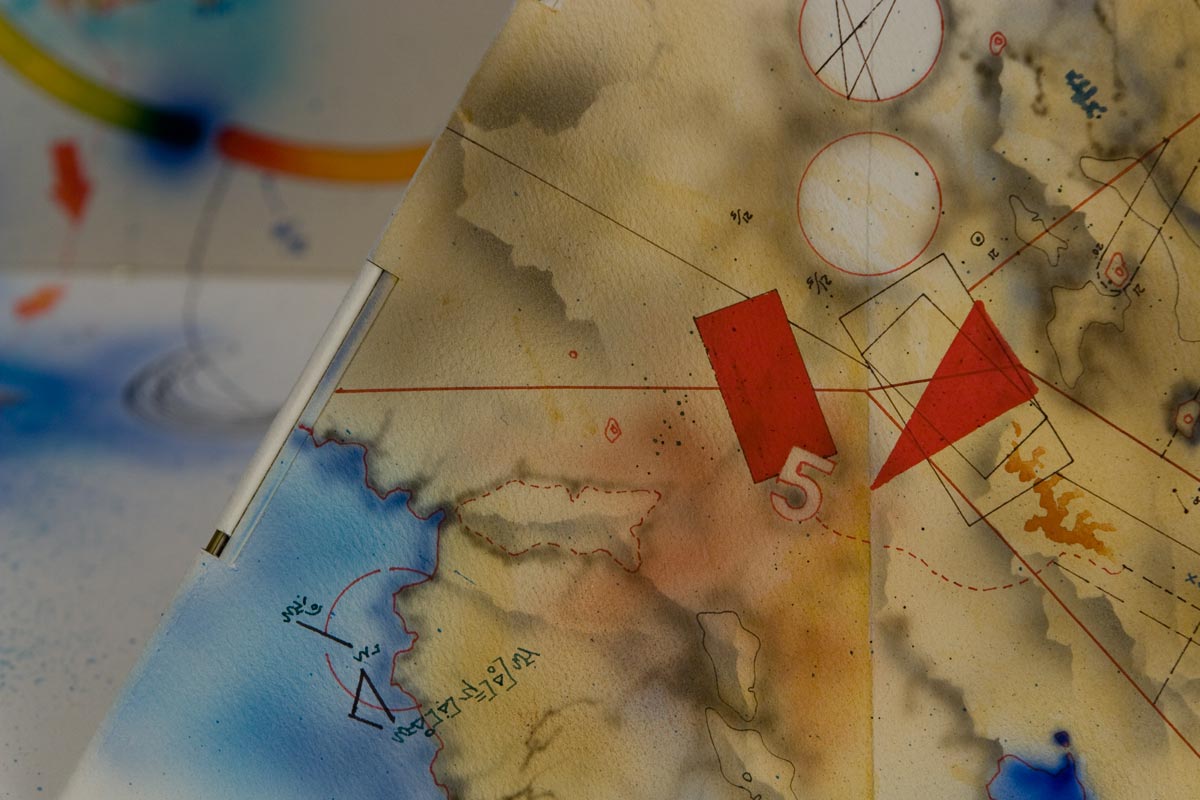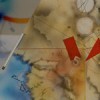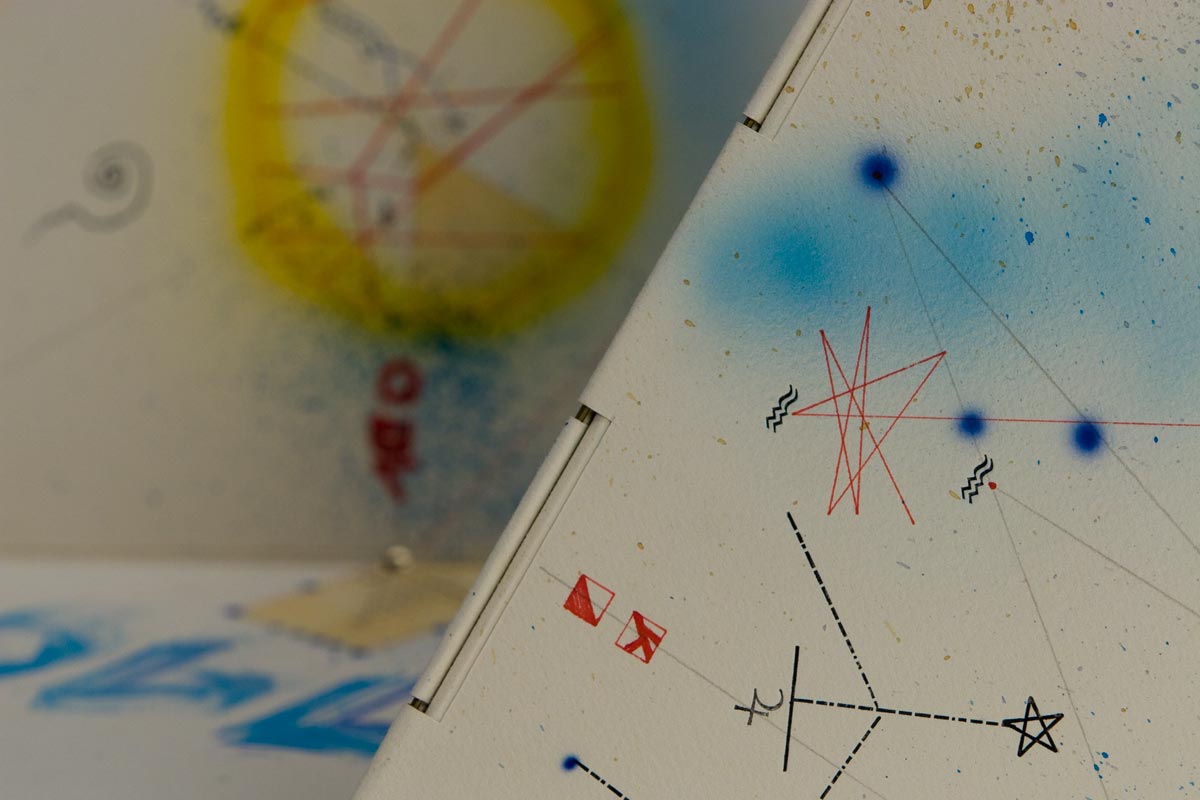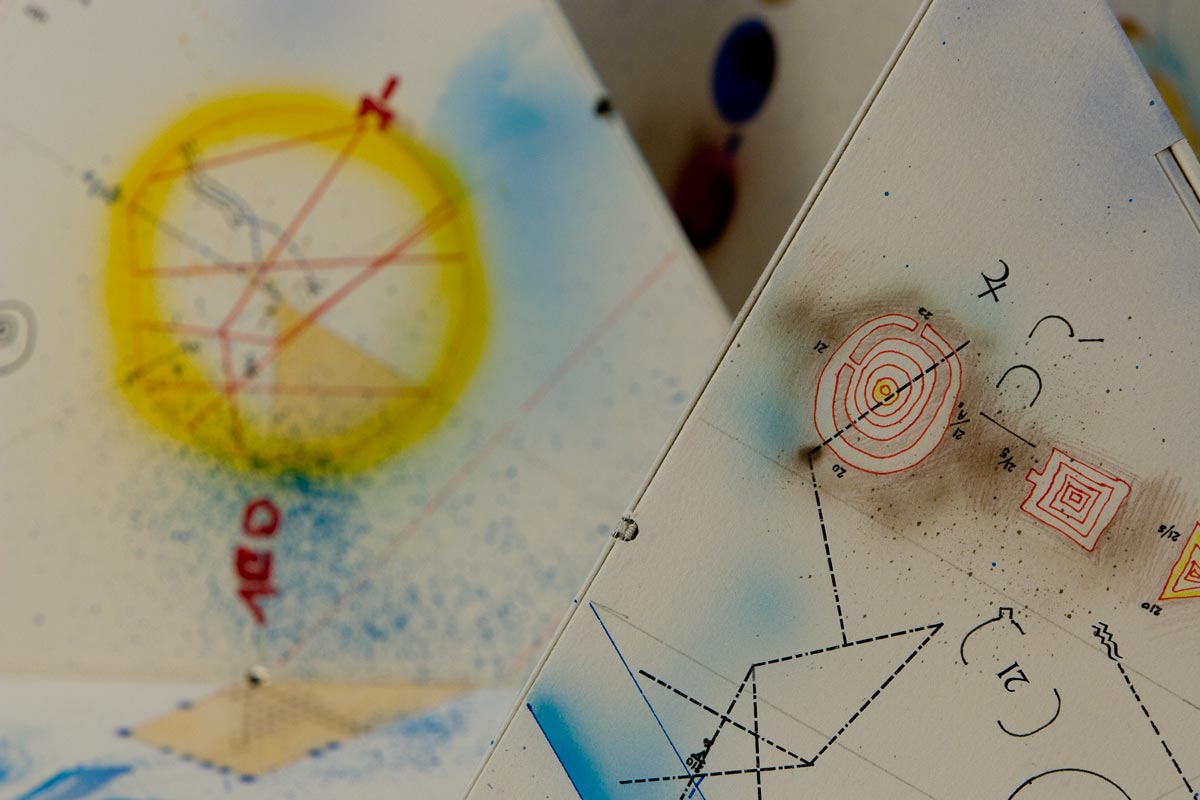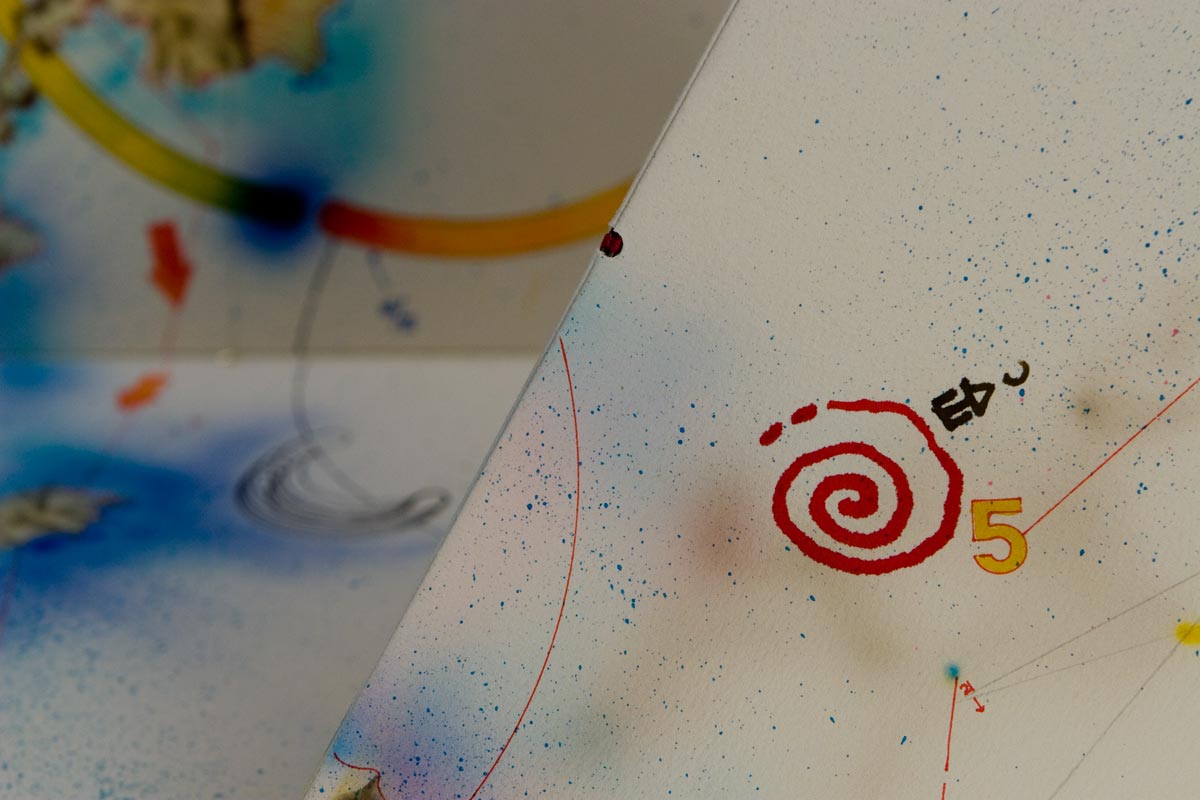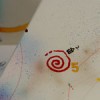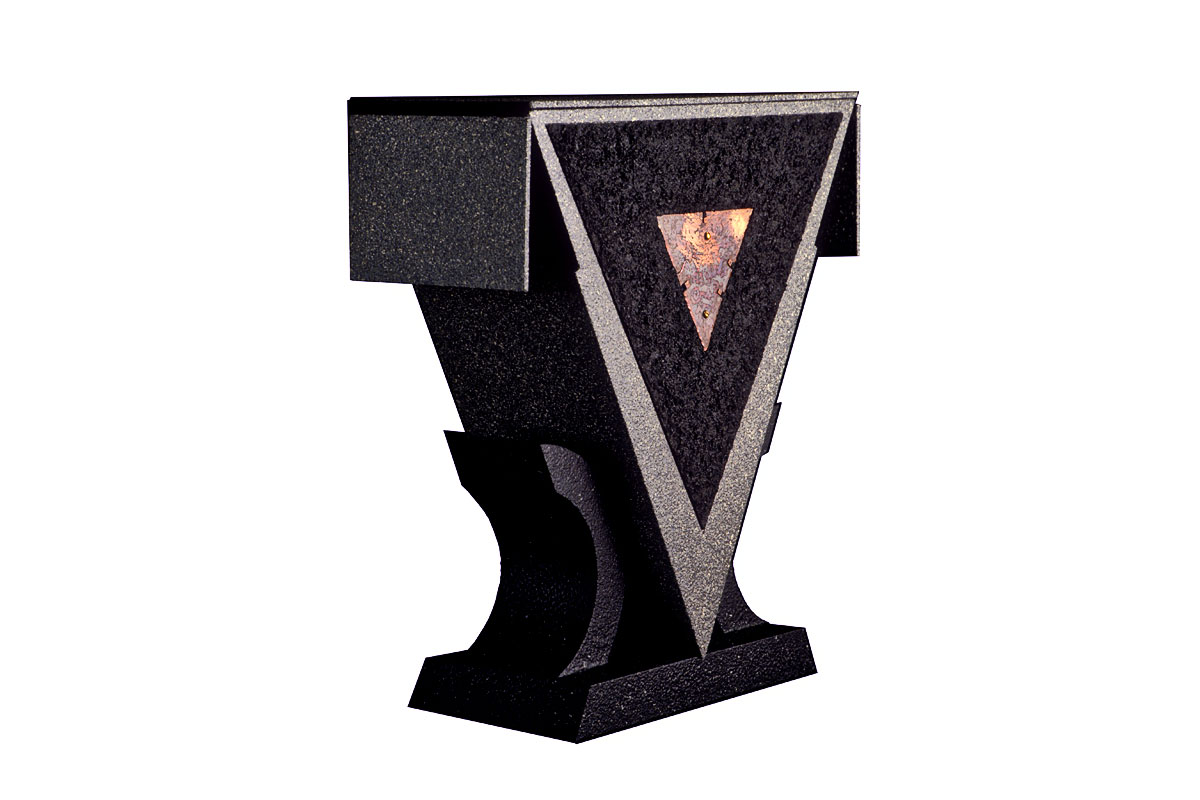
DANIEL E. KELM
|
The series of unique books Investigations: The Four Elements draws upon Kelm’s and collaborator Tim Ely’s shared interest in alchemy and sacred geometry. Each book consists of a set number of interlocking panels that can be assembled into one or more shapes forming Platonic solids. The Platonic solids—tetrahedron, cube, octahedron, dodecahedron, and icosahedron—are polyhedrons with congruent sides, edges, and angles. Although these five shapes were known prior to Plato, they are specifically mentioned in his dialogue Timaeus. In this work, Plato describes these solids as the building blocks of matter, equating the tetrahedron with the element of fire, the cube with earth, the octahedron with air, the icosahedron with water, and the dodecahedron with the materials that form the stars and the cosmos. —Aprile Gallant, Curator, Prints, Drawings, and Photographs, Smith College Museum of Art Book sculpture by Kelm. Painting and surface treatments by Ely.
Magnets are embedded in the flaps of the top of the box.  |
